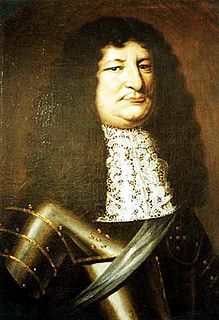 W
WThe Treaty of Bromberg or Treaty of Bydgoszcz was a treaty between John II Casimir of Poland and Elector Frederick William of Brandenburg-Prussia that was ratified at Bromberg (Bydgoszcz) on 6 November 1657. The treaty had several agreements, including the Treaty of Wehlau, signed on 19 September 1657 by the Brandenburg–Prussian and Polish–Lithuanian envoys in Wehlau. Thus, the Treaty of Bromberg is sometimes referred to as treaty of Wehlau-Bromberg or Treaty of Wehlau and Bromberg.
 W
WThe Treaty of Königsberg was concluded on 7 January (O.S.) / 17 January (N.S.) 1656 during the Second Northern War. Frederick William I, the "Great Elector" of Brandenburg and duke of Prussia, was forced to join the Swedish camp and became a Swedish vassal for the Duchy of Prussia and Ermland. In a second treaty, negotiated on 24 February 1656 in Königsberg (Królewiec), Frederick William I concluded a defensive alliance with France.
 W
WThe treaty of Marienburg, concluded on 29 June 1656, was a Brandenburg-Prussian – Swedish alliance during the Second Northern War.
 W
WThe Treaty or Peace of Oliva of 23 April (OS)/3 May (NS) 1660 was one of the peace treaties ending the Second Northern War (1655-1660). The Treaty of Oliva, the Treaty of Copenhagen in the same year, and the Treaty of Cardis in the following year marked the high point of the Swedish Empire.
 W
WThe treaty of Rinsk, concluded on 2 November (O.S.) / 12 November (N.S.) 1655, was a Ducal-Royal Prussian alliance during the Second Northern War. Frederick William I, Elector of Brandenburg and duke of Prussia, and the nobles of Royal Prussia agreed to allow Brandenburgian garrisons in Royal Prussia to defend it against the imminent Swedish invasion. The important towns of Danzig (Gdańsk), Thorn (Toruń) and Elbing (Elbląg) did not participate in the treaty and were not garrisoned by Brandenburgian troops, and except for Danzig surrendered to Sweden. The remainder of Royal Prussia, except for Marienburg (Malbork) was overrun by Sweden and Frederick William I's forces pursued to Königsberg, where he was forced to accept Swedish overlordship in the Treaty of Königsberg in January 1656.
 W
WThe Treaty or Peace of Saint-Germain-en-Laye of 19 June (OS) or 29 June (NS) 1679 was a peace treaty between France and the Electorate of Brandenburg. It restored to France's ally Sweden her dominions Bremen-Verden and Swedish Pomerania, lost to Brandenburg in the Scanian War. Sweden ratified the treaty on 28 July 1679.
 W
WThe Treaty of Stettin of 4 May 1653 settled a dispute between Brandenburg and Sweden, who both claimed succession in the Duchy of Pomerania after the extinction of the local House of Pomerania during the Thirty Years' War. Brandenburg's claims were based on the Treaty of Grimnitz (1529), while Sweden's claims were based on the Treaty of Stettin (1630). The parties had agreed on a partition of the Swedish-held duchy in the Peace of Westphalia (1648), and with the Treaty of Stettin determined the actual border between the partitions. Western Pomerania became Swedish Pomerania, Farther Pomerania became Brandenburgian Pomerania.
 W
WThe Treaty of Vossem was signed on 6 June 1673, between Frederick William, Elector Brandenburg and Louis XIV of France; England, then a French ally against the Dutch, was included as a party to the terms but not a signatory. It was ratified by both parties on 20 July.